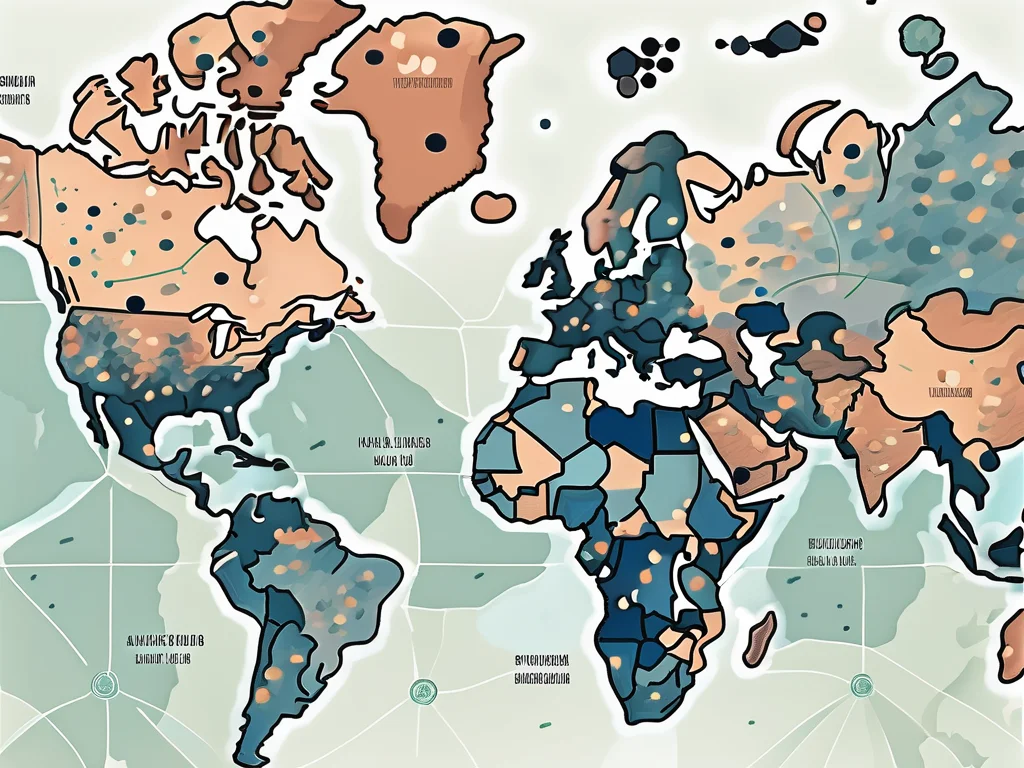In our interconnected world, infectious diseases can spread rapidly across borders, making it critical to understand how they transmit and how to prevent their spread. This blog explores various modes of disease transmission, including direct contact, indirect contact, airborne, droplet, vector-borne, foodborne, waterborne, fomite, and vertical transmission. By understanding these pathways and implementing effective prevention strategies, we can protect public health and reduce the burden of infectious diseases.
What Are the Main Modes of Disease Transmission?
Infectious diseases spread through various pathways, each requiring specific prevention measures. Below, we break down the primary modes of transmission and how to mitigate their risks.
1. What Is Direct Contact Transmission and How to Prevent It?
Direct contact transmission occurs when an individual physically touches an infected person or their bodily fluids. This includes skin-to-skin contact, sexual intercourse, or contact with infected wounds.
- Examples: HIV, herpes, and skin infections like MRSA.
- Prevention:
- Wash hands regularly with soap and water.
- Use condoms to reduce sexually transmitted infections.
- Avoid sharing personal items like towels, razors, or toothbrushes.
- Healthcare workers should wear gloves and masks to minimize exposure.
2. How Does Indirect Contact Transmission Occur?
Indirect contact transmission happens when a person touches a contaminated surface or object, transferring pathogens to themselves or others. Common surfaces include doorknobs, shared utensils, or money.
- Examples: Common cold, flu, and norovirus.
- Prevention:
- Disinfect high-touch surfaces regularly.
- Practice hand hygiene after touching public surfaces.
- Avoid touching your face, especially in public spaces.
- Maintain respiratory etiquette by covering coughs and sneezes.
3. What Is Airborne Transmission and How to Stop It?
Airborne transmission involves inhaling tiny infectious particles that remain suspended in the air for extended periods. These particles can travel long distances, posing a higher risk in enclosed spaces.
- Examples: Tuberculosis, measles, and chickenpox.
- Prevention:
- Ensure proper ventilation in indoor spaces.
- Use air purifiers and maintain HVAC systems.
- Maintain indoor humidity levels between 40-60% to reduce pathogen survival.
- Cover your mouth and nose when coughing or sneezing.
4. How Does Droplet Transmission Spread Diseases?
Droplet transmission occurs when larger respiratory droplets from an infected person’s cough, sneeze, or speech are inhaled by someone nearby, typically within a few feet.
- Examples: Influenza, COVID-19, and whooping cough.
- Prevention:
- Maintain physical distance from symptomatic individuals.
- Wear masks to reduce droplet spread.
- Healthcare workers should use PPE like face shields and gowns during close contact.
5. What Is Vector-Borne Transmission and How to Control It?
Vector-borne transmission involves pathogens carried by vectors like mosquitoes, ticks, or fleas, which transfer diseases between hosts.
- Examples: Malaria, dengue fever, and Lyme disease.
- Prevention:
- Eliminate vector breeding sites, such as standing water for mosquitoes.
- Use insect repellent and bed nets.
- Support community vector control programs.
- Consider vaccines or prophylactic medications where available.
6. How Does Foodborne Transmission Occur?
Foodborne transmission happens when individuals consume contaminated food or beverages due to improper handling, cooking, or storage.
- Examples: Salmonella, E. coli, and Listeria.
- Prevention:
- Wash fruits and vegetables thoroughly.
- Cook food to safe temperatures.
- Store food properly to avoid contamination.
- Prevent cross-contamination by using separate cutting boards for raw meat and produce.
7. What Causes Waterborne Transmission?
Waterborne transmission occurs when people consume or come into contact with contaminated water, often due to poor sanitation or untreated water sources.
- Examples: Cholera, typhoid fever, and hepatitis A.
- Prevention:
- Use water purification methods like filtration or chlorination.
- Ensure access to clean drinking water.
- Promote proper sanitation and waste disposal practices.
8. What Is Fomite Transmission and How to Avoid It?
Fomite transmission involves pathogens spreading through inanimate objects, or fomites, like doorknobs, phones, or clothing.
- Examples: Norovirus, flu, and staph infections.
- Prevention:
- Regularly clean and disinfect high-touch objects.
- Avoid sharing personal items exposed to contaminated environments.
- Practice hand hygiene after touching shared surfaces.
9. How Does Vertical Transmission Affect Newborns?
Vertical transmission occurs when a mother passes an infection to her fetus or newborn during pregnancy, childbirth, or breastfeeding.
- Examples: HIV, syphilis, and cytomegalovirus.
- Prevention:
- Screen and treat pregnant women for infectious diseases.
- Use medications to reduce transmission risks (e.g., HIV antiretroviral therapy).
- Follow breastfeeding guidelines based on the specific disease.
Why Is Understanding Disease Transmission Important?
Understanding how diseases spread is essential for implementing effective prevention strategies. Each mode of transmission requires tailored measures, from handwashing for direct contact to vector control for mosquito-borne diseases. By staying informed and proactive, individuals and communities can reduce the risk of outbreaks and protect public health.
How Can Healthcare Settings Minimize Disease Transmission?
Healthcare facilities are high-risk environments for disease transmission due to frequent patient contact and contaminated surfaces. Key strategies include:
- Infection Control Training: Educate healthcare workers on hand hygiene, PPE use, and sterilization protocols.
- Environmental Cleaning: Regularly disinfect surfaces and equipment to reduce indirect and fomite transmission.
- PPE Usage: Ensure masks, gloves, and gowns are used during patient interactions to prevent droplet and direct contact transmission.
- Ventilation Systems: Maintain proper airflow to reduce airborne transmission risks.
What Role Does Public Awareness Play in Disease Prevention?
Public awareness is critical in controlling disease spread. Educating communities about transmission modes and prevention strategies empowers individuals to take action. Key efforts include:
- Health Campaigns: Promote hygiene practices, vaccination, and vector control through public health initiatives.
- School Education: Teach children about handwashing and respiratory etiquette to instill lifelong habits.
- Community Programs: Encourage local efforts to eliminate vector breeding sites or improve water sanitation.
How Can Technology Aid in Preventing Disease Transmission?
Advancements in technology offer innovative solutions to combat disease spread:
- Air Purification Systems: Use HEPA filters and UV light to reduce airborne pathogens.
- Water Treatment Tech: Employ advanced filtration and purification systems for safe drinking water.
- Smart Disinfection: Utilize UV robots or automated cleaning systems in healthcare and public spaces.
- Health Apps: Promote apps that track outbreaks or provide hygiene reminders.
Conclusion: Taking Action to Prevent Disease Spread
Understanding the modes of disease transmission—direct contact, indirect contact, airborne, droplet, vector-borne, foodborne, waterborne, fomite, and vertical—is the first step toward effective prevention. By adopting simple practices like handwashing, mask-wearing, and proper food handling, individuals can significantly reduce their risk of infection. In healthcare settings, strict protocols and advanced technologies further minimize transmission risks. Public awareness and community efforts also play a vital role in creating a healthier, safer world. Stay informed, follow guidelines, and take proactive steps to protect yourself and others from infectious diseases.



